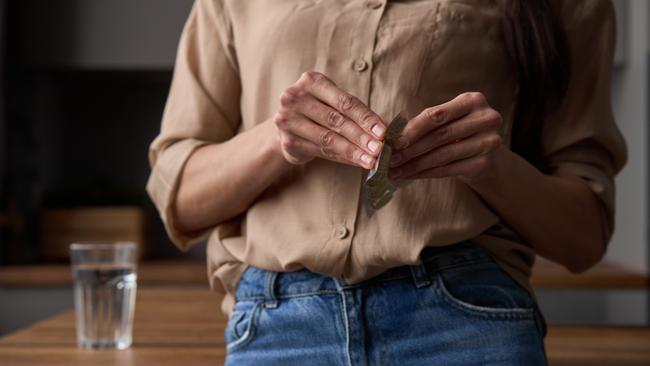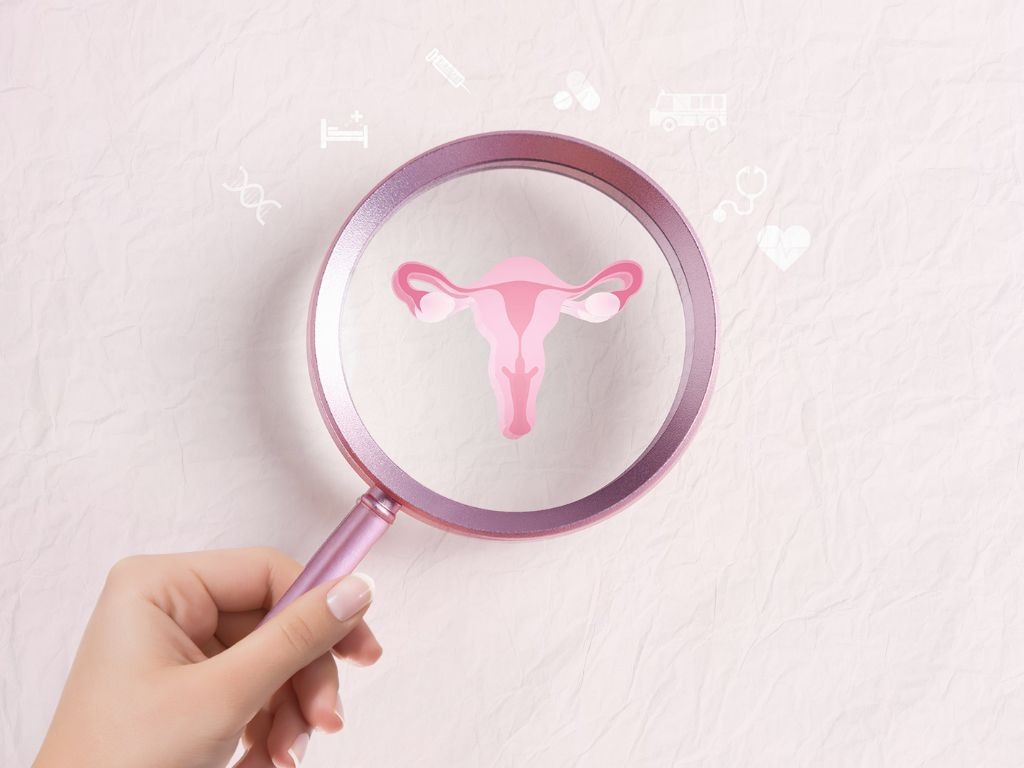Menopausal Hormone Therapy has made a comeback. Here’s what you should know
Night sweats, low libido, hot flushes and Menopausal Hormone Therapy. What doctors want you to know about it, and your options amid a national shortage.
For women who experience problematic symptoms of menopause, finding the right treatment can be challenging and distressing. There is no uniform fix because the experience is so individual, and what works for one person won’t necessarily work for the next.
Menopausal hormone therapy, previously known as hormone replacement therapy, is the most common proven treatment for “traditional” but problematic symptoms. But getting the medication isn’t always easy.
“There’s still lots of women I see who say that they’d been to another doctor, and the doctor would say, ‘Oh no, MHT will cause breast cancer’, and say to just go to the chemist and get something over the counter,” says Dr Marita Long.
She is a general practitioner who specialises in women’s health and the Victoria/Tasmania board director of the Australasian Menopause Society. She became a GP after spending 20 years as a nurse.
“My main take-home from medical school about menopause was post-menopausal bleeding is cancer until proven otherwise. There wasn’t much on menopause or the symptoms of menopause, and there was certainly not a lot taught about hormone therapy other than this risk of breast cancer.”
In Dr Long’s opinion, it is crucial women entering midlife have a good and regular GP who understands women’s health. If yours isn’t meeting your needs, she suggests finding a new one.
In this latest report for our series examining menopause and perimenopause, we focus on MHT and some of the other options.
Social media is awash with influencers and celebrity doctors advocating the use of hormone therapy. It has helped lead to a resurgence of the drugs that were largely abandoned by patients and many doctors in the early 2000s following the release of early but misinterpreted results of a large study into the risks and benefits of MHT.
The results were part of the Women’s Health Initiative Study, released in 2002. They suggested a heightened risk of serious health complications including breast cancer, stroke, heart attacks and blood clots from the use of some MHT combinations.
It is now understood the initial data lacked important context. While all medications carry risks, subsequent studies show MHT is safe for many women when used appropriately.
What is MHT and do I need it?

Doctors suggest only women with problematic symptoms or low bone density should consider MHT. Then it is up to each woman to decide if the medication is right for them. The ultimate decision should be made in consultation with a doctor who understands your medical history.
Those who may consider MHT are people with more severe but “typical” symptoms such as night sweats, hot flushes, sleep disturbance, a loss of sexual interest or painful sex, and a new onset of low mood if it is accompanied by other symptoms. For those, MHT may be offered as an effective option. The other reason a woman may choose to take MHT is to slow down bone loss if they have low bone density when they enter menopause, or if they start menopause before the age of 40.
A trap, Dr Long says, is writing off every ailment at midlife as being caused by menopause. “Dizziness, palpitation, joint aches and pains, extreme fatigue; they can be caused by a whole range of symptoms. If we bucket them all just into menopause and just go, ‘Okay, this is menopause, and we’ll just give you HRT’, we will miss things.”
Around a quarter of women will not experience any adverse symptoms of menopause. Half of women will experience mild to moderate symptoms and the remaining quarter will experience severe or long-lasting symptoms that won’t be alleviated by lifestyle changes alone.
There is a range of hormonal versions of MHT and the suitability of any will depend on a patient’s history, symptoms and other medications they’re taking. The therapies also come in different forms including tablets, gels, vaginal treatments and the most popular one – patches.
Professor Susan Davis specialises in women’s health and sex hormones and is one of the most authoritative voices on menopause. She is also an endocrinologist, a clinical researcher and head of the Monash University Women’s Health Research Program.
“The primary (hormone therapy) is oestrogen and, for the women who have not had a hysterectomy, we use concurrently a progestogen.”

Another type of MHT growing in popularity, largely thanks to social media, is testosterone. Testosterone levels in women tend to peak during their 20s and then decline with age. In menopause, testosterone may be used for women who experience a reduced sexual desire, if it is causing them distress. However, many social media influencers tout what they say are additional benefits, and many are promising it will transform a woman’s life.
Professor Davis has studied testosterone since the 1980s and cautions there’s still a lack of scientific evidence about any additional benefits, though research is ongoing. “We’re now doing three clinical trials; one looking at the effects of testosterone on bone, one looking at the effects of testosterone (on) muscle, and the other one looking at the effects of testosterone on heart failure in postmenopausal women. So, we’re trying to understand what is the role of testosterone in women beyond sexual function.”
Associate Professor Magdalena Simonis is a GP, a spokeswoman for women’s health with the Australian College of General Practitioners, a senior honorary research fellow at the University of Melbourne department of general practice, and a contributing author with The Australian. She says finding the right MHT formula to suit a patient can take time.
“Sometimes your first option is not necessarily the one that they respond well to, so some of it is trial and error, and when you finally get to something that they are on, that they’re happy with, you really want to try and maintain that consistency for their benefit, and also for the predictability.”
That brings us to the next issue.
The shortage
The MHT resurgence has come amid a major supply shortage driven, in part, by demand and manufacturing issues. It’s a problem that’s plagued Australian supplies since 2020.
The shortage affects hormone patches, which also happen to be the most popular form of MHT because they’re typically well tolerated, easy to use, and most are subsidised under the PBS.
The situation has angered those who rely on the patches and left doctors scrambling to offer alternatives.
“If (patients) run out and don’t transfer to another form of menopausal hormone therapy, their symptoms will mostly return,” Associate Professor Simonis says. In an ideal world, women who need to come off MHT will do so gradually. “I’ve had patients who’ve gone literally to peripheral parts of metropolitan Melbourne to several pharmacies to fill out a script in search of what they need, and it’s distressing.”
Other women are rationing their patches by cutting them in half or extending the length of time they wear one.
“It is problematic when women are very stable on a treatment that is cost-effective and it’s working. When that’s no longer available, then we have to change things up for women, which can be really unnerving,” Dr Long said.
Late last year, the Therapeutic Goods Administration renewed its call for GPs to limit prescribing the patches to new patients until supplies improve. On Christmas Eve, it provided updated advice, warning some shortages will persist throughout 2025.
To ease pressure, the TGA has approved the supply of overseas-registered alternative patches of “many strengths of Estradot and both strengths of Estalis Continuous transdermal patches”. It has also implemented what’s called a Serious Scarcity Substitution Instrument, which allows pharmacists to dispense an alternative strength or brand without the patient requiring a new prescription.
In a statement to The Australian, the TGA advised that health professionals could now order the additional supplies “by contacting the approval holders”, details for which are on the TGA website.
In the meantime, Professor Davis says alternatives are available. “We’ve got two oestrogen gels … And for healthy women, around the average age of menopause, oral oestrogen is still an option. I think we should be using all the different options available because it’s not a one-size-fits-all story.”
However, not all alternatives are listed on the PBS. Getting the right formulation may also require some trial and error. The tablets metabolise differently to the gels and patches, and may not be appropriate for everyone, while the area where a gel is applied needs to remain dry for several hours.

Associate Professor Simonis says it’s time for manufacturers to step up. “They need to be manufacturing more. They need to focus their production and manage their production to meet the higher demand. And that’s going to be a global requirement now for the next generation of women coming through. It’s not as it was 10 years ago and five years ago, and I think that manufacturers need to be made aware of that.”
Concerns about dosing and compounding hormones
Professor Davis has three primary concerns about MHT: “Women who don’t need it who are getting it. Women who do need it and are not getting it … because they’re being turned away by doctors. And then women who are being treated with high doses.”
This week, The Australian heard from a woman who was prescribed six times the recommended dosage of oestrogen as part of her MHT treatment for hot flushes and night sweats.
She was started on a dose three times the recommended dose and says each time she complained that her symptoms were back, her dosage was increased.
Professor Davis is outraged at the thought of patients being prescribed high-dose hormones and fears it could be a growing trend, influenced by the practices of international celebrity doctors who spruik the practice.
“If you’re treating women with higher and higher and higher-dose oestrogen, the women are basically building up tolerance to the oestrogen. So, they might still get symptoms, even though you’re giving them a big dose.
“We try to use the doses that have been studied, where we have data about effects on thrombosis, effects on stroke, effects on the breast, on bleeding patterns.
“But if you sort of go away from those doses, you’re risking exposing women to perhaps inadequate protection of the lining of their uterus, which increases the risks of cancer. Or you can be exposing women to high doses of hormones where we don’t know what the effects on the breasts are.”
Other doctors have told The Australian they’ve seen patients who have been prescribed testosterone but received no follow-up monitoring.
“We are seeing women with complications of testosterone, which can be totally avoided by correct administration and dosing and follow-up,” one doctor recalls.
Side-effects, when left untreated, are irreversible and can include enlargement of the clitoris, a deepening of the voice and excessive body hair.
They say while hormone therapy is largely safe and effective for most women in their 50s or in the first 10 years after the onset of menopause, it is not a simple “set and forget”.
Another concern is compounded hormones, sold as “bio-identical” hormone therapy and often marketed as being natural. To which Professor Davis counters: “Everything is synthetic – there’s no oestrogen plant.”
Associate Professor Simonis agrees. “They’re both synthesised and laboratory. The only one that’s regulated for quality and safety is the prescribed menopausal hormone therapy.”
“It’s also usually more costly. So, it preys on women who are desperate and it charges them more, often selling them the belief that it’s safer because it’s more natural – whereas it’s neither.”
The Australasian Menopause Society does not recommend the use of compounded bioidentical hormone therapy in any form.
Alternatives to MHT
There is a newer class of drug that came on to the Australian market last year called Fezolinetant. It has also caught the attention of Professor Davis, who says it is a potential option for women who cannot or prefer not to use MHT.
However, given it is still a relatively new drug, she adds, it is one that should be closely monitored in patients.
The drug has been approved by the TGA for the treatment of moderate to severe vasomotor symptoms.
“What this does is specifically block the chemical messages in the brain that trigger hot flushes and sweats,” Professor Davis says.
“We’re just monitoring women for liver function because abnormal liver function tests have been reported in some women using this new drug. But I’ve got patients on it, and they’re finding it incredibly effective, but it’s a very recent drug and not yet on the PBS.”
Antidepressants have also been shown to help reduce night sweats and hot flushes for some women.
In the first instance, women are advised to consider lifestyle changes, including to ensure they’re eating well and exercising regularly. Modifications such as wearing layered clothing made of natural fibres can be helpful with hot flushes, as can having a desk fan, good ventilation and appropriate bedding.
Yoga, mindfulness, cognitive behavioural therapy and vitamin E have also helped to ease milder symptoms for some people, according to the Australasian Menopause Society.





To join the conversation, please log in. Don't have an account? Register
Join the conversation, you are commenting as Logout